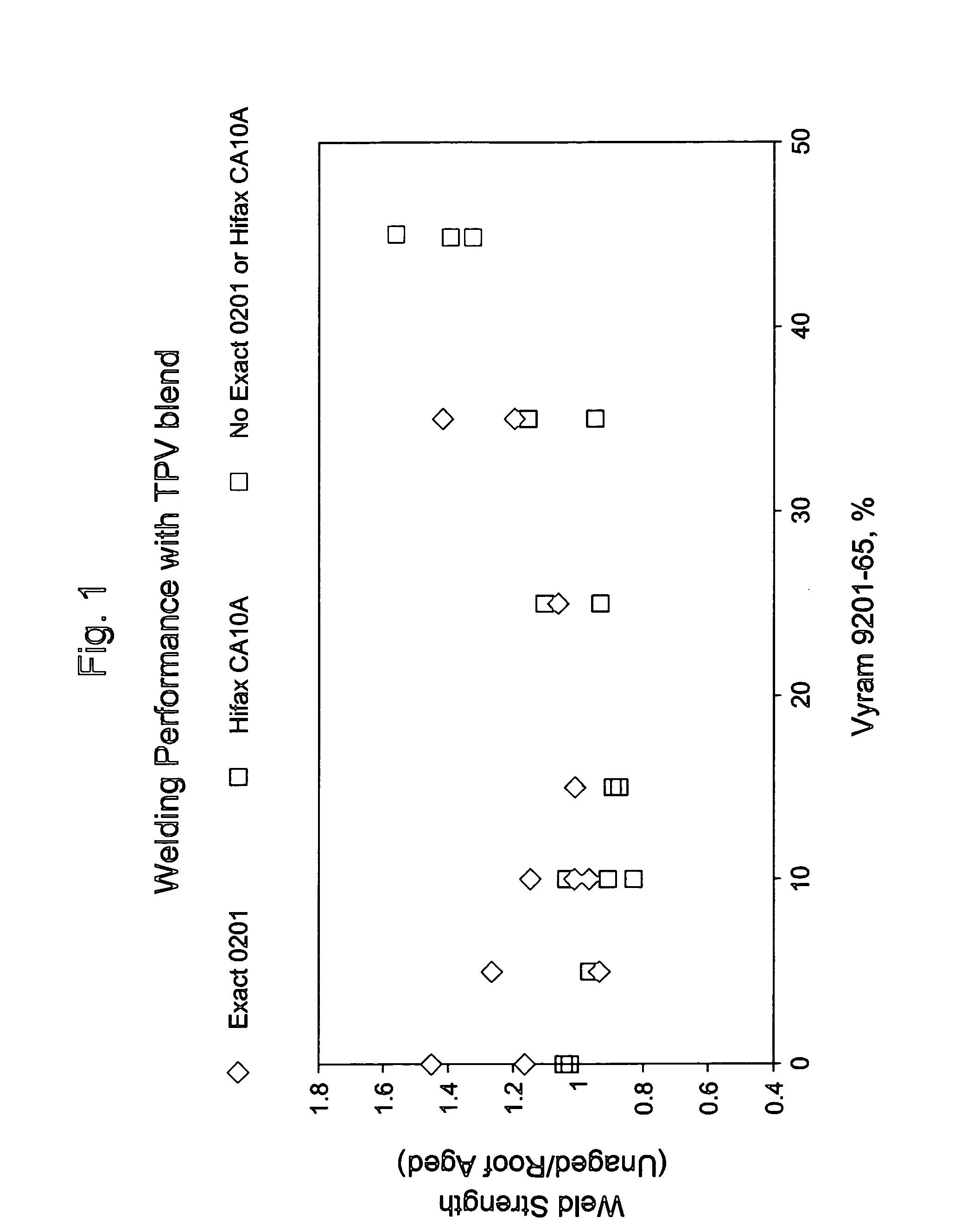Weldable thermoplastic sheet compositions
a thermoplastic sheet and composition technology, applied in the field of thermoplastic sheets or membranes, can solve the problems of deteriorating or destroying the integrity of the seal at the seams, seams subjected to adverse weather conditions, and the necessity of using adhesives for sealing the membran
- Summary
- Abstract
- Description
- Claims
- Application Information
AI Technical Summary
Benefits of technology
Problems solved by technology
Method used
Image
Examples
examples 1-9 and 14-50
[0076] Table I, Table III and Table IV list formulations compounded in a single-screw extruded under equipment setup of A or B outlined below. Setup A used a 48 inches (121.9 cm) wide sheeting die where the 3.5 inches (8.9 cm) extruder was fitted with a Maddock mixing screw having a L / D ratio of 24:1. This screw had a compression ratio of 3.5:1. The extruder rpm was adjusted between 10 and 20. Setup B used a 12 inches (30.5 cm) sheeting die where the 1.5″ (38 mm) extruder was fitted with a Barrier Maddock screw having a L / D ratio of 24:1. The screw had a compression ratio of 2.3:1. The extruder rpm was 100. In both setups the temperature of the extruder at zones 1-4 ranged from 16°° C. to 183° C. The die temperatures ranged from 160° C. to 188° C. The die pressures varied from 0.75×107 Pascal to 1.93×107 Pascal. The melt material temperature exiting the extruder ranged from 175° C.-190° C. Approximately 11.3 kilograms of the formulations were tumble blended and feed directly into th...
PUM
 Login to View More
Login to View More Abstract
Description
Claims
Application Information
 Login to View More
Login to View More - R&D
- Intellectual Property
- Life Sciences
- Materials
- Tech Scout
- Unparalleled Data Quality
- Higher Quality Content
- 60% Fewer Hallucinations
Browse by: Latest US Patents, China's latest patents, Technical Efficacy Thesaurus, Application Domain, Technology Topic, Popular Technical Reports.
© 2025 PatSnap. All rights reserved.Legal|Privacy policy|Modern Slavery Act Transparency Statement|Sitemap|About US| Contact US: help@patsnap.com

